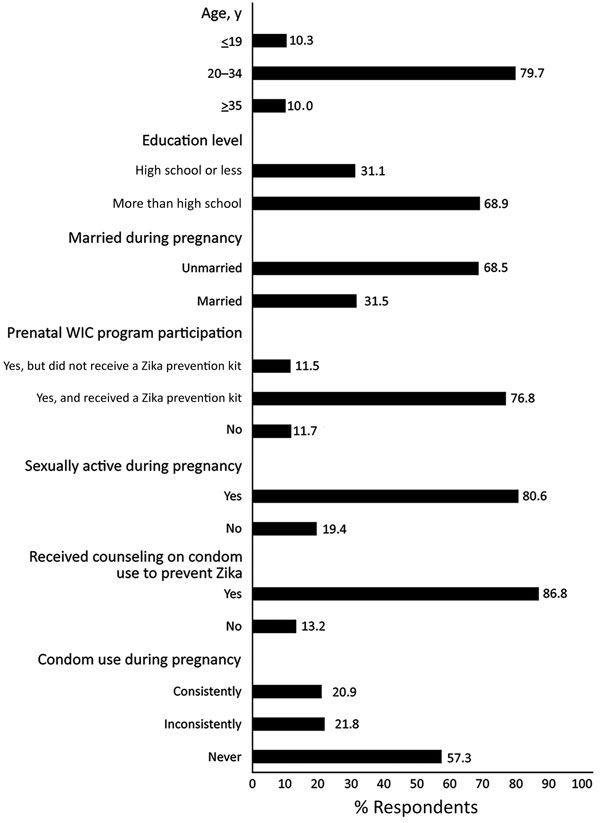Volume 25, Number 11—November 2019
Dispatch
Preventing Sexual Transmission of Zika Virus Infection during Pregnancy, Puerto Rico, USA, 20161
Figure

Figure. Distribution of maternal characteristics and receipt of counseling on condom use to prevent Zika virus infection, Pregnancy Risk Assessment Monitoring System–Zika Postpartum Emergency Response Study, Puerto Rico, 2016. WIC, Special Supplemental Nutrition Program for Women, Infants, and Children.
1Preliminary results from this study were presented at the 2018 American Public Health Association Annual Meeting in San Diego, California, USA, November 10–14, 2018.
Page created: October 15, 2019
Page updated: October 15, 2019
Page reviewed: October 15, 2019
The conclusions, findings, and opinions expressed by authors contributing to this journal do not necessarily reflect the official position of the U.S. Department of Health and Human Services, the Public Health Service, the Centers for Disease Control and Prevention, or the authors' affiliated institutions. Use of trade names is for identification only and does not imply endorsement by any of the groups named above.